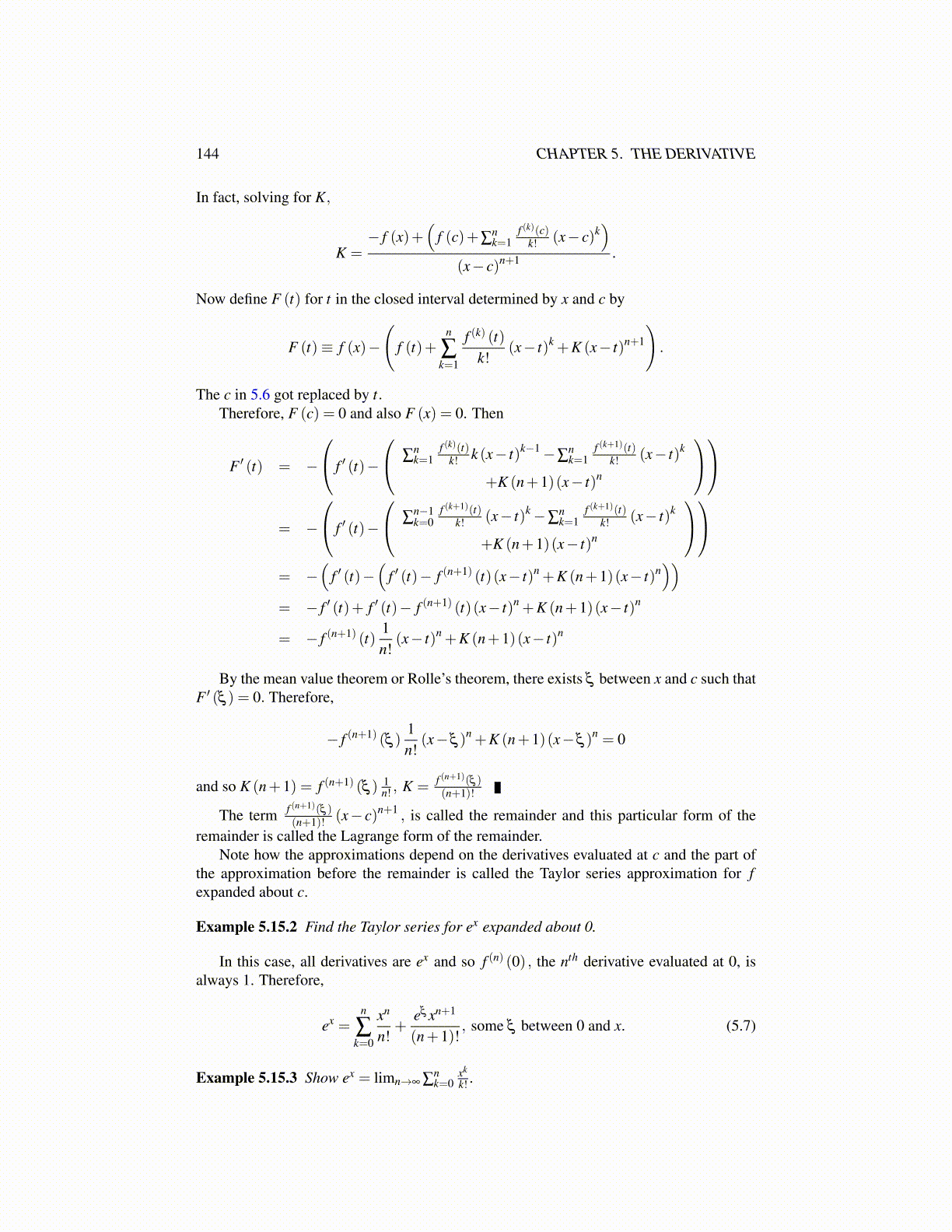
144 CHAPTER 5. THE DERIVATIVE
In fact, solving for K,
K =− f (x)+
(f (c)+∑
nk=1
f (k)(c)k! (x− c)k
)(x− c)n+1 .
Now define F (t) for t in the closed interval determined by x and c by
F (t)≡ f (x)−
(f (t)+
n
∑k=1
f (k) (t)k!
(x− t)k +K (x− t)n+1
).
The c in 5.6 got replaced by t.Therefore, F (c) = 0 and also F (x) = 0. Then
F ′ (t) = −
f ′ (t)−
∑nk=1
f (k)(t)k! k (x− t)k−1 −∑
nk=1
f (k+1)(t)k! (x− t)k
+K (n+1)(x− t)n
= −
f ′ (t)−
∑n−1k=0
f (k+1)(t)k! (x− t)k −∑
nk=1
f (k+1)(t)k! (x− t)k
+K (n+1)(x− t)n
= −
(f ′ (t)−
(f ′ (t)− f (n+1) (t)(x− t)n +K (n+1)(x− t)n
))= − f ′ (t)+ f ′ (t)− f (n+1) (t)(x− t)n +K (n+1)(x− t)n
= − f (n+1) (t)1n!
(x− t)n +K (n+1)(x− t)n
By the mean value theorem or Rolle’s theorem, there exists ξ between x and c such thatF ′ (ξ ) = 0. Therefore,
− f (n+1) (ξ )1n!
(x−ξ )n +K (n+1)(x−ξ )n = 0
and so K (n+1) = f (n+1) (ξ ) 1n! , K = f (n+1)(ξ )
(n+1)!
The term f (n+1)(ξ )(n+1)! (x− c)n+1 , is called the remainder and this particular form of the
remainder is called the Lagrange form of the remainder.Note how the approximations depend on the derivatives evaluated at c and the part of
the approximation before the remainder is called the Taylor series approximation for fexpanded about c.
Example 5.15.2 Find the Taylor series for ex expanded about 0.
In this case, all derivatives are ex and so f (n) (0) , the nth derivative evaluated at 0, isalways 1. Therefore,
ex =n
∑k=0
xn
n!+
eξ xn+1
(n+1)!, some ξ between 0 and x. (5.7)
Example 5.15.3 Show ex = limn→∞ ∑nk=0
xk
k! .